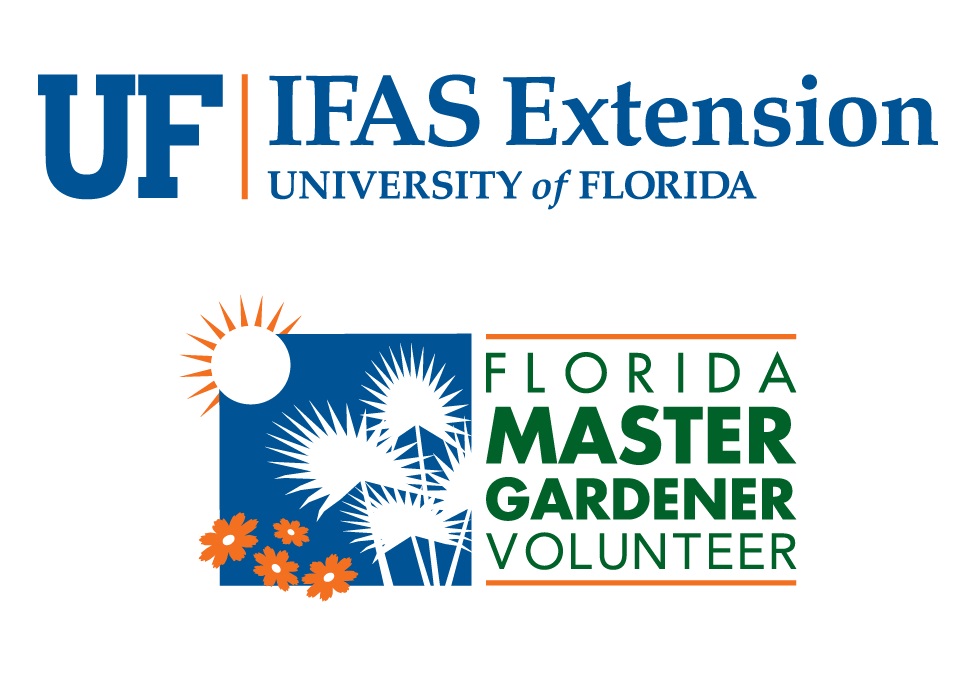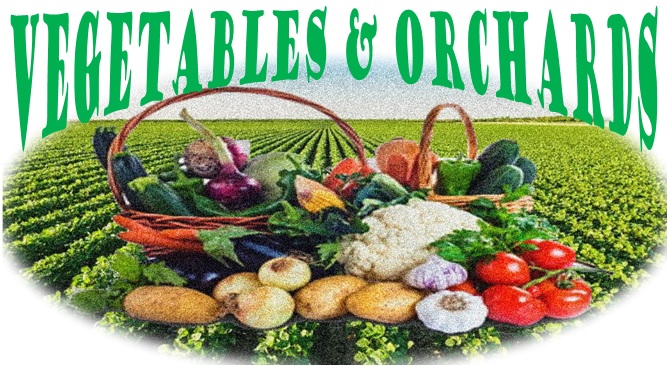Ask Master Gardener Volunteer Linda Clemens
Calamondin ( Citrofortunella microcarpa)
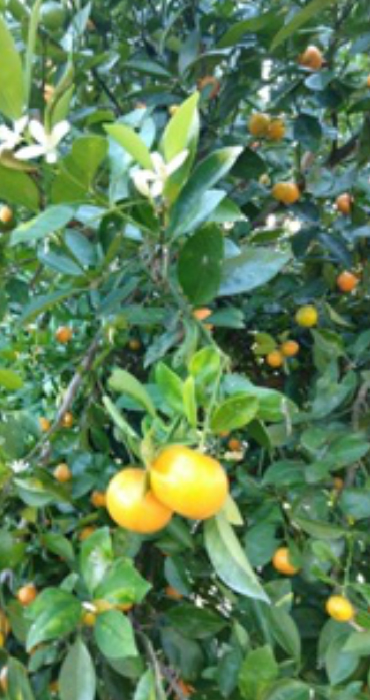 One of the most useful fruit trees for the north Florida home garden is the calamondin. A calamondin (also known as calamansi) is a small, tart, juicy citrus fruit with a sweet, tender skin. Fruits range from one to two inches in diameter and the flavor is like a sour tangerine. Trees bear abundant fruit year round with fragrant blooms and fruit in various stages of ripeness on the tree all at the same time.
One of the most useful fruit trees for the north Florida home garden is the calamondin. A calamondin (also known as calamansi) is a small, tart, juicy citrus fruit with a sweet, tender skin. Fruits range from one to two inches in diameter and the flavor is like a sour tangerine. Trees bear abundant fruit year round with fragrant blooms and fruit in various stages of ripeness on the tree all at the same time.
Not only is a calamondin tree useful, it is attractive as well. Mature height ranges between 12 and 14 feet, with a spread of 8 to 10 feet. Leaves are a dark, glossy green, with white flowers and bright orange fruit. Originally native to Southeast Asia, the calamondin is a natural cross between the mandarin orange and the kumquat. Trees are self-fertile, so you only need one tree to have fruit. Trees are generally not grafted and grow on their own roots.
Growing Conditions
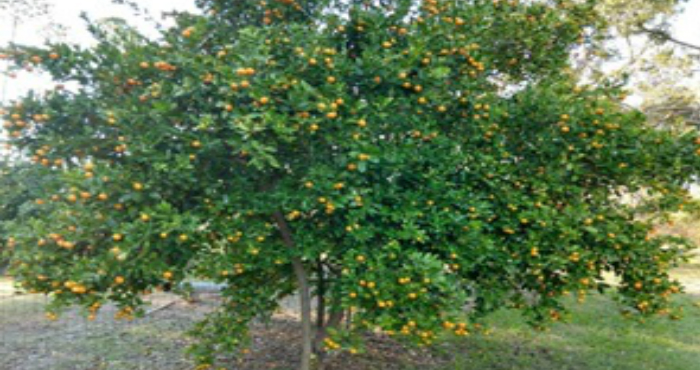 Calamondin trees are suitable for outside planting in USDA zones 8A to 10B. Cold hardy to 20° F when mature, a young tree needs winter protection for the first 2 to 3 years. My trees have experienced temperatures down to 25 °F with some leaf damage and loss of fruit, but recovered completely by summer. In colder climates, the calamondin is a popular container tree.
Calamondin trees are suitable for outside planting in USDA zones 8A to 10B. Cold hardy to 20° F when mature, a young tree needs winter protection for the first 2 to 3 years. My trees have experienced temperatures down to 25 °F with some leaf damage and loss of fruit, but recovered completely by summer. In colder climates, the calamondin is a popular container tree.
Calamondin trees grow best in full sun to part shade. They like a soil pH on the acidic side – from 5.5 to 7.0 – so you may need to amend your soil if you are located in an area with higher soil pH. I find that I need to top dress my calamondin tree in Wakulla County with granular sulfur a couple times a year to keep the pH right. Calamondin trees need to be fertilized in February, and twice more during the spring and summer. It is a good idea to not apply fertilizer after August to minimize tender new growth that could be harmed by winter frosts.
What can I do with all those Calamondins?
A mature calamondin tree can overwhelm you with the amount of fruit it will bear. Fruit ripens slowly and can stay on the tree for several weeks. The tree will also bear continuously, so you can pick the fruit as needed.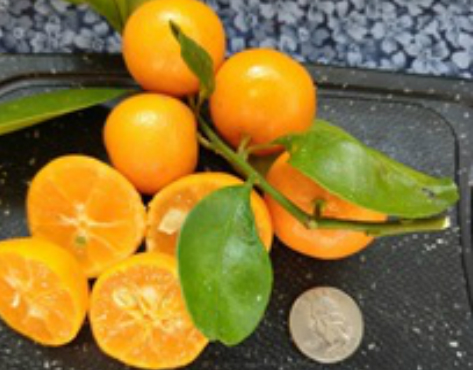
It is best to cut the fruit from the tree to avoid tearing the tender skin and causing the fruit to spoil if you don’t plan to use it right away. Calamondin fruit does not keep well – it will last for about two weeks in the refrigerator before it becomes too soft to use. The fruit can be preserved in various ways. Calamondin marmalade is delicious and easy to make. The fruit can also be juiced and the juice can be frozen for future use.
Since the fruit is generally available year round, the best way to use it is fresh. You can use a calamondin in any way that you can use a lemon, lime or key lime. They make a wonderful calamondin-aide drink, and can be added to ice tea or other beverages (think gin-and-tonic). A calmondin can be squeezed over cut up fruit, or over seafood dishes, or added to cranberry sauce. There are many recipes on line for calamondin cakes, pies, breads and other desserts. Calamondins were first introduced into Florida in 1899, and vintage cookbooks and magazines offer some creative recipes.
Calamondin pie recipe is incredibly simple
My family’s favorite calamondin pie recipe is incredibly simple and can be made with pantry ingredients and fresh calmondins from your tree. Ready in less than an hour, this pie can handle any culinary emergency!
Calamondin
One graham cracker-crumb pie shell
One can sweetened condensed milk
1 (8 oz) carton whipped topping
½ cup calamondin juice (about 12 to 16 large fruits)
Combine condensed milk with calamondin juice. Fold in whipped topping. Pour into pie shell and refrigerate. Garnish with whipped cream or topping and thin sugared slices of calamondin if desired.
If you have any questions or suggestions for future articles please email to wakullamg@ifas.ufl.edu

Follow Us
| The Institute of Food and Agricultural Sciences (IFAS) is an Equal Opportunity Institution authorized to provide research, educational information, and other services only to individuals and institutions that function with non-discrimination with respect to race, creed, color, religion, age, disability, sex, sexual orientation, marital status, national origin, political opinions, or affiliations. U.S. Department of Agriculture, Cooperative Extension Service, University of Florida, IFAS, Florida A&M University Cooperative Extension Program, and Boards of County Commissioners Cooperating |
 0
0
